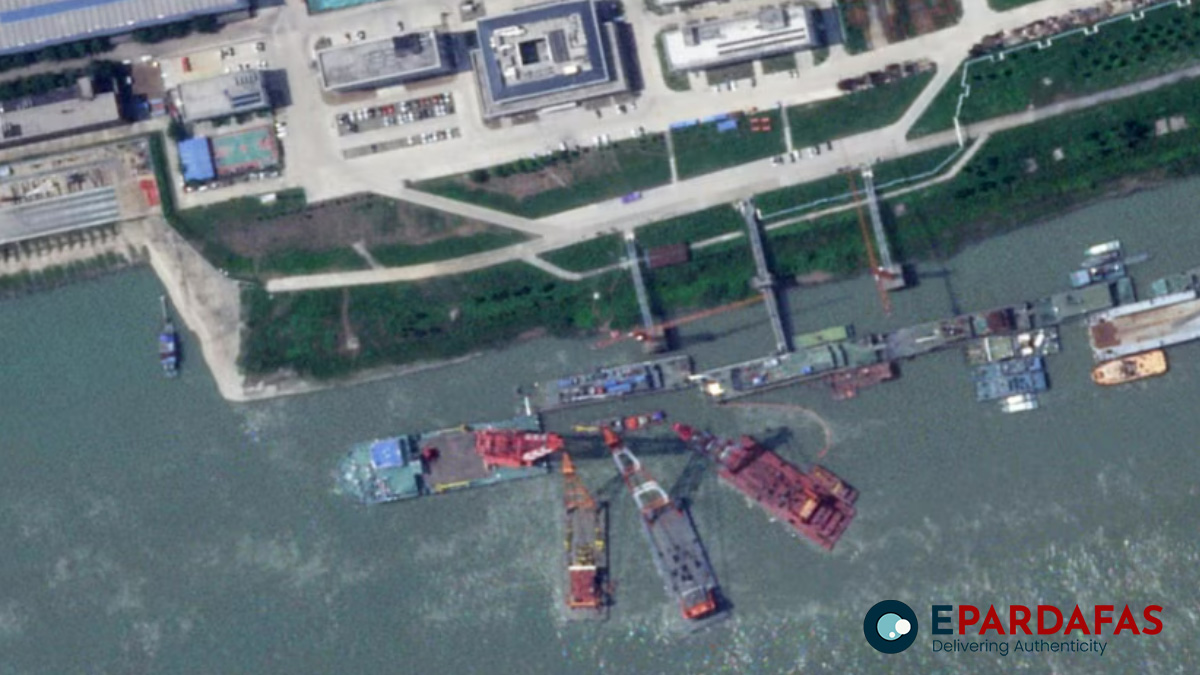Satellite imagery has revealed that China’s first Zhou-class nuclear-powered attack submarine sank while under construction at a shipyard on the Yangtze River, marking a significant setback for Beijing as it continues to build the world’s largest navy. The submarine likely sank between May and June, according to a senior U.S. defense official who provided details under anonymity.
The Zhou-class submarine, part of China’s growing military capabilities, was discovered submerged near a pier with cranes surrounding the vessel, indicating efforts to lift it off the riverbed. Satellite images taken in mid-June showed rescue equipment and containment booms, used to prevent potential leaks, in place around the site. By August, a submarine was spotted back at the dock, though it is unclear if it was the same vessel.
The sinking of the nuclear submarine comes as China continues to assert its territorial claims in the South China Sea, a crucial global trade route. The region is also subject to long-standing disputes with neighboring countries, including the Philippines, Vietnam, Malaysia, Brunei, and Taiwan. The U.S. has increased its presence in the region, conducting freedom of navigation operations that have angered Beijing.
China’s Foreign Ministry spokesperson, when asked about the submarine incident, said he was not familiar with the topic and provided no further information. The Chinese navy has yet to confirm or deny the event.
The incident involving the Zhou-class submarine was first publicly identified in July by Thomas Shugart, a former U.S. Navy submariner and current analyst at the Center for a New American Security. The loss of the submarine, first reported by The Wall Street Journal, comes as China builds up its naval fleet at a rapid pace, making it a primary security concern for the U.S.
It remains unknown whether the submarine’s nuclear reactor was operational or if the vessel had been loaded with nuclear fuel at the time of the sinking. However, no radiation leaks have been reported in the area since the incident.
The sinking comes at a time of heightened military activity for China, which recently launched an intercontinental ballistic missile into international waters in the Pacific Ocean, its first such test since 1980. China currently operates six nuclear-powered ballistic missile submarines, six nuclear-powered attack submarines, and 48 diesel-powered attack submarines, according to a U.S. military report.
The incident highlights both the challenges China faces in its military expansion and the potential implications for regional and global security.














Comments